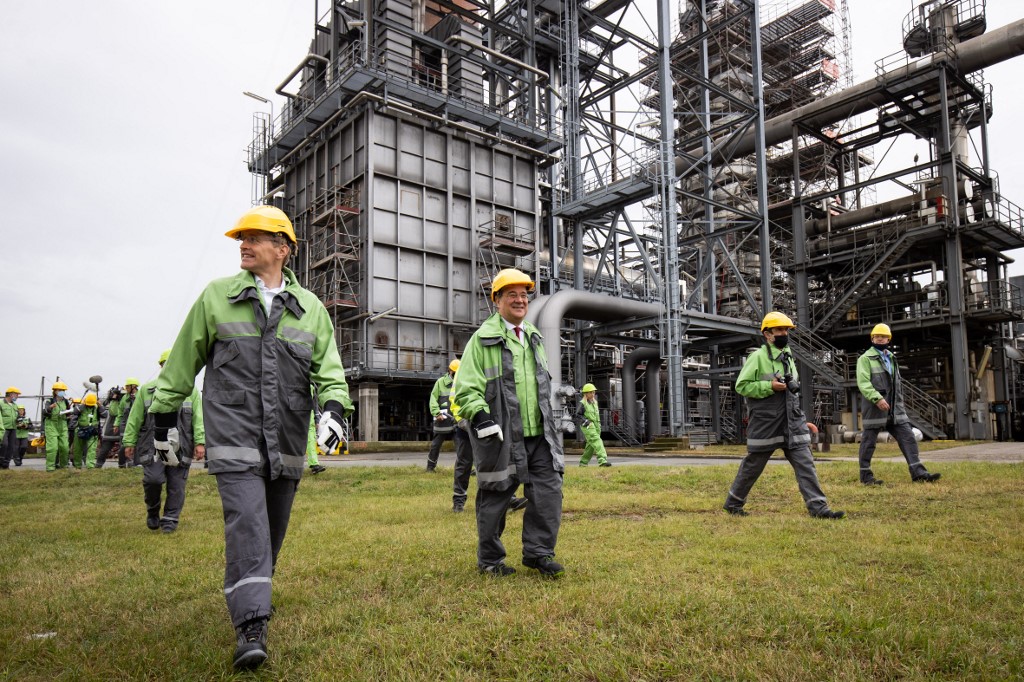(ATF) India’s latest clean hydrogen move came late last week when Dublin-based Fusion Fuel Green Plc, a green hydrogen tech company, signed a memorandum of understanding with Indian engineering, procurement and construction heavyweight BGR Energy Systems to develop projects in India.
The two companies’ first project will include a demonstrator plant for BGR Energy in Cuddalore in the Indian state of Tamil Nadu. Fusion Fuel will use a technology that includes a miniature PEM-based electrolyser with solar power.
After its initial project slated to be completed by the end of the year, the two companies plan to develop larger-scale projects to produce hydrogen needed for green ammonia production and bio-ethanol, as well as feedstock for other heavy industrial uses.
Fusion Fuel says its electrolyser can produce green hydrogen at highly competitive costs.
Green hydrogen is produced by splitting water into hydrogen and oxygen using an electrolyser that may be fed by wind power, solar power, or hydro power and as such produces no emissions. Brown hydrogen uses fossil fuels in its production and has a high carbon footprint, while blue hydrogen also uses fossil fuels but also utilises carbon, capture and storage (CCS) technology for emissions.
Argument over cost, but Europe optimistic
Green hydrogen development, however, has been slow to gain momentum in most Asia-Pacific countries due to its current high cost compared to production from fossil fuels. The region’s current liquified natural gas (LNG) pivot, in its first stages in most of Southeast and South Asia, away from dirtier burning coal needed for thermal power production could also create headwinds for hydrogen investment, at least in the mid-term.
Moreover, there are varying forecasts over when green hydrogen can reach cost parity with fossil fuels. Some claim that parity could be reached within the next year, while others see a longer and bumpier road to achieve that objective. Other factors including geographical location and government incentive have to also be factored in.
Commodities data provider S&P Global Platts said recently that green hydrogen production costs need to drop at least another 50% to compete with fossil fuel production costs. The International Renewable Energy Agency (IREA), for its part, said in December that it could take another 10 years for green hydrogen to compete with the cost of fossil fuel alternatives.
Much of Europe however appears more optimistic. In February, a consortium was formalised between 30 French, Spanish, Italian and German companies to produce green hydrogen from solar energy at a cost they claim is similar to that of fossil fuels. However, the claim is not without nay-sayers since technical details haven’t materialized yet.
Hydrogen-fossil fuel cost parity for India has been placed less than a decade away in lock-step with production costs dropping around 50% over that time period, according to a report in January by New Delhi-based The Energy and Resources Institute (TERI).
Going forward, with the price reduction and the imperative to decarbonise the economy, Indian hydrogen demand could actually increase five-fold by mid-century, with about 80% green hydrogen, the report added.
Currently, India’s hydrogen demand is around 6Mt per annum for ammonia and methanol for industry sectors such as fertilizers and refineries. By 2050, TERI sees this increasing to around 28Mt, primarily with the growing demand from industry but also with expansion into the transport and power-generation sectors.
Two companies are off to an early lead in India’s hydrogen push in the transport sector. Indian Oil is establishing hydrogen compressed natural gas (HCNG) stations, as well as announcing a hydrogen fuel cell bus pilot. Mumbai-based Tata Motors, for its part, is also developing hydrogen buses and spearheading other programs.
The International Energy Agency (IEA) also sees India making strides in its clean hydrogen build-out strategy.
The country has the potential to close the cost gap between hydrogen made from electrolysis and natural gas more quickly than many other countries because of its relatively high gas prices and low-cost solar PV potential, the EIA agency said in its Indian Energy Outlook 2021 released last month.
However to achieve that “flexible electrolysis and cost-effective hydrogen storage will be essential to integrate hydrogen with variable renewables.”
Indian Finance Minister Nirmala Sitharaman announced in her budget in February that the country will launch a National Hydrogen Energy Mission (NHEM) in 2021-22.
End users in the plan reportedly include the steel, chemical and transportation industries since these sectors contribute to one third of India’s GHG emissions. Since these key sectors burn fossil fuels, they can be replaced by clean hydrogen.
There are also ongoing talks to mandate the usage of 10% domestic hydrogen in fertilizer, steel and oil refineries.
























